This is my best ever vanilla American buttercream frosting. It has a beautiful fluffy consistency and it’s super quick and easy to make, using only basic ingredients.
Not only is the consistency great, but this classic frosting has the perfect vanilla flavor to pair with all of your sweet treats! It goes great onto birthday cakes as well as cupcakes, cake pops, cookies, macarons and brownies.
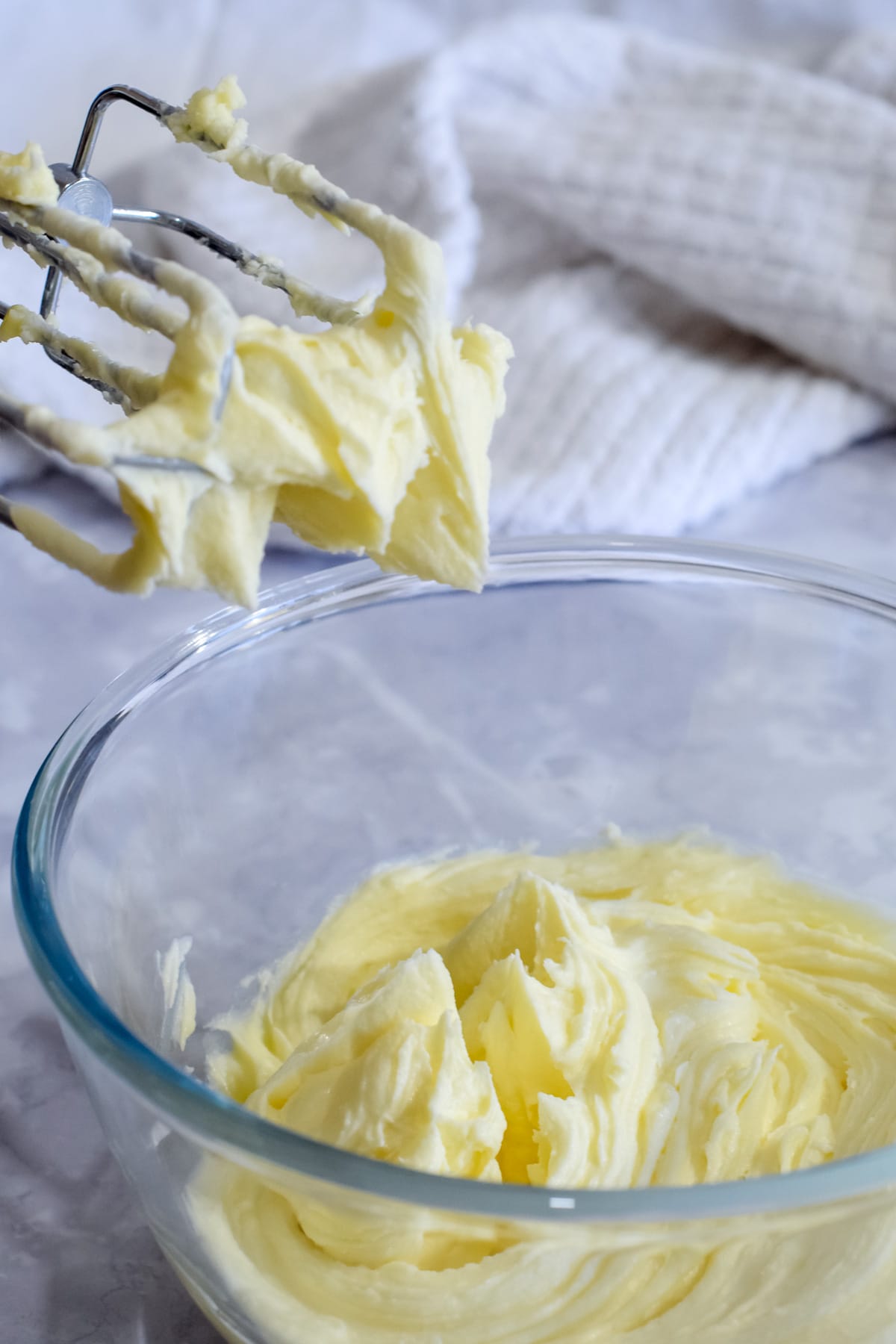
Jump to:
🧁 What is American buttercream?
American buttercream is a classic frosting made of beaten butter and powdered sugar. Typically, cream or milk and flavourings, such as vanilla extract or cocoa powder, are also added.
This frosting is known to be quite sweet and is easy to make. It’s often used to decorate cupcakes and cakes.
Other types of buttercream
There are quite a few different kinds of buttercream frosting. Other than the classic American style, there’s also Swiss meringue buttercream (uses heated egg whites and sugar), Italian meringue buttercream (uses egg whites and hot sugar syrup), French buttercream (uses egg yolks) and German buttercream (custard buttercream), amongst a few other less common types.
Typically, most home bakers prefer American buttercream, also called classic buttercream, as it is the easiest type to make. It uses very few ingredients and there’s no need to cook any parts of it, making it really quick and easy to make.
A lot of professional bakers prefer Swiss meringue or Italian meringue buttercreams, however, as they tend to be less sweet, more stable and silky smooth compared to American buttercream.
✏️ Making a tasty and easy recipe
American buttercream is the simplest of buttercreams to make, and I wanted to share an easy American buttercream frosting recipe that works on all cakes and cupcakes, as well as for filling sandwich cookies, topping sugar cookies, frosting brownies, etc.
This vanilla buttercream is perfect for so many sweet treats and can be adapted to suit your needs. You can change the flavours really easily and it’s such a quick recipe it’s great for a last-minute bake.
This is my favorite buttercream recipe as it uses only simple ingredients and makes a lovely fluffy frosting. The great thing about it is that it’s not a grainy frosting and you can get so many flavours from one basic frosting.
🥘 Ingredients notes
- It’s best to start this recipe with room temperature ingredients. Using butter straight from the fridge will make it super difficult to beat it to a light and fluffy consistency and adding cold milk or cream can cause your buttercream to split.
- I recommend sieving your powdered sugar (also called icing sugar or confectioners’ sugar) for this recipe – this will help give you a super smooth and silky buttercream.
- When measuring your ingredients, using weights rather than cups will give you more accuracy.
- I like using vanilla extract rather than vanilla essence. It’s got a purer vanilla taste due to being less processed.
- I use unsalted butter for this recipe, as it allows you to control the amount of salt in your frosting. You can then add a pinch or two or salt to your liking, but this is optional. Different brands of salted butters have different amounts of salt in them so it’s hard to gauge how salty your buttercream will be.
- You can use either heavy cream or milk for this buttercream recipe. You’ll likely need a bit more cream than you would milk to get the right consistency as it’s thicker. Cream will also give your frosting a creamier consistency than milk (sorry, probably an obvious point!). Whole milk will also be creamier than semi-skimmed and so on.
🔪 Equipment notes
- I like using digital scales for weighing my ingredients - it's super easy and more accurate. I quite like KitchenAid or Salter scales.
- It’s best to use measuring spoons, as your standard teaspoon and tablespoon for eating with won't actually be the correct volume. Also, level off any heaped scoops before adding your ingredients.
- When using a stand mixer, I like to use the paddle attachment for making buttercream frosting and use a low to medium speed setting. This will help to beat out any air bubbles whilst avoiding over-mixing your buttercream.
- It’s a good idea to scrape down the sides and bottom of the stand mixer bowl every so often so you get an even mix for your frosting!
- You can also get great results by using a medium bowl and an electric hand mixer.
- If you don’t have an electric mixer, use some elbow grease and beat your buttercream using a wooden spoon, whisk or fork in a mixing bowl. This will take longer but still be delicious.
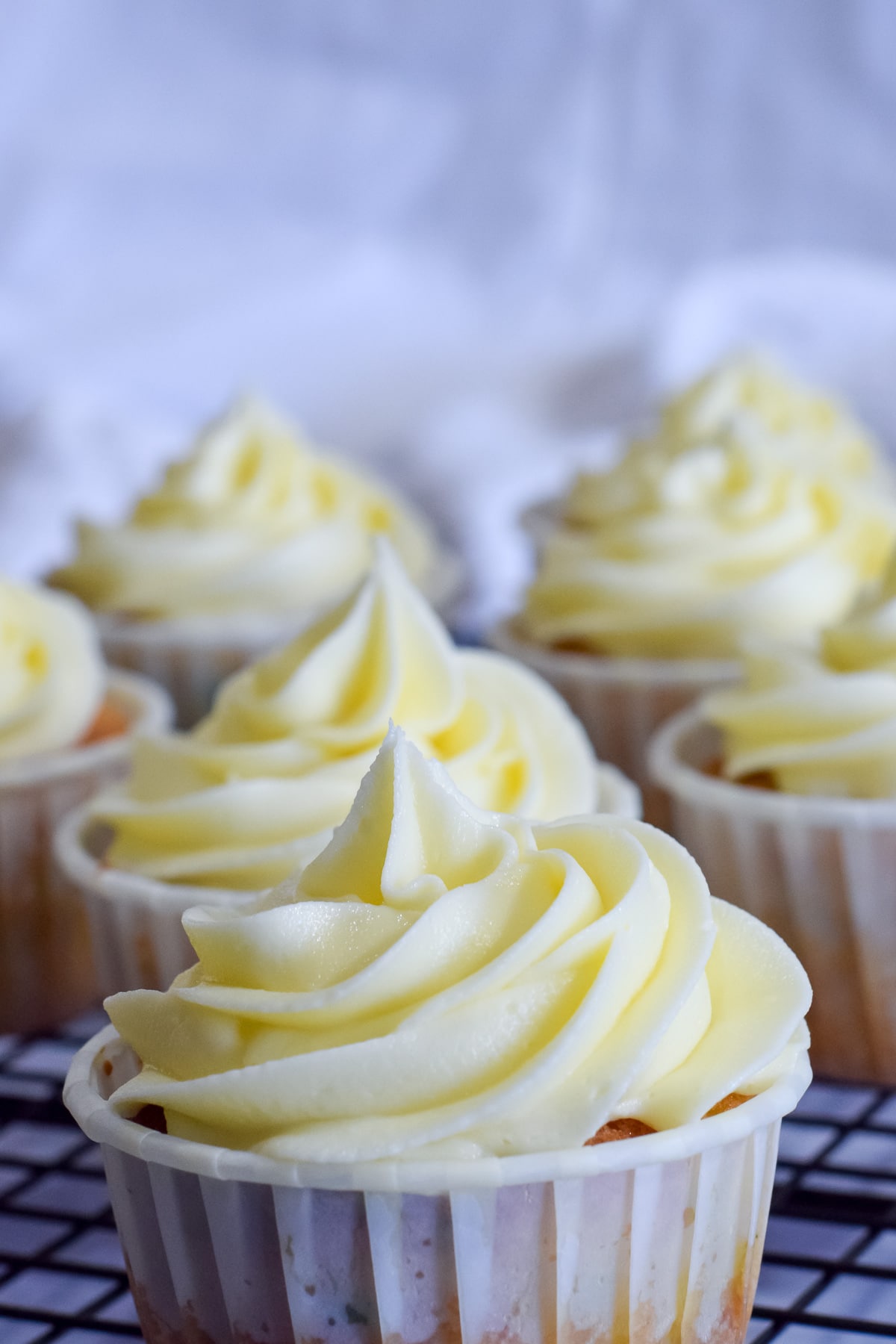
🍱 Storage
How long does homemade frosting last?
Your homemade frosting should last up to 3 days at room temperature or a few weeks in the fridge stored in an airtight container.
It’s best to store your American buttercream in an airtight container in the fridge. You may need to bring it back up to room temperature and re-beat it before using it or it could be too firm to pipe or spread easily.
It’s good to note that if you use slightly older buttercream, your cake / cupcakes may not last as long as usual.
Can you freeze buttercream?
Your buttercream frosting can be frozen in an airtight container for up to 2 months. Defrost, re-beat and use as normal per recipe.
💭 Top tips for success
For a light and creamy American buttercream frosting, start by beating your room temperature butter until it’s pale and fluffy. It could just be me, but this always seems to take longer than I think. It should be several minutes of beating the butter if using a stand/electric mixer. This will go a long way in giving you creamy and light frosting.
When you sieve in your powdered sugar, to avoid a big cloud of sugar dusting the air, give your mix a little stir with a spatula or wooden spoon first to slightly mix the icing sugar into the butter. Then you can turn on your stand mixer or electric mixer without breathing in sugar clouds!
When using your buttercream, be sure the sweet treat that you’re frosting is completed cooled first. Otherwise, your homemade frosting will melt straight off it!
Fixing broken buttercream
Buttercream can be tricky sometimes, and it can split if you over-beat your frosting or if the temperature is too hot or too cold. For example, don’t add cold milk straight from the fridge to your buttercream!
It can be hard to rescue broken buttercream, but generally if it’s turned stiff and curdled, then it’s probably broken because the butter was too cold. Pop your frosting in a warm water bath or double boiler (bain marie) set up, gently warming until it starts to loosen up. Stir gently until your buttercream comes back to together in a smooth mix.
If your frosting becomes thin and soupy as you mix it, then your butter may have been too warm when you started. You can try refrigerating your buttercream in the bowl for 10-20mins before re-beating it.
How to lessen the sweetness of buttercream frosting
If you don’t like your buttercream too sweet, you can add salt to cut some of the sweetness. Add it in a pinch at a time, giving it a taste test, so you don’t risk overdoing it.
Alternatively, you can also reduce the amount of powdered sugar you put in, but only by a few tablespoon worth or you’ll affect the consistency.
How to thicken homemade frosting
For a thicker homemade frosting, you can add more butter to your buttercream. This is what gives your frosting it’s structure.
You can also put your buttercream in the fridge for 30mins firm it up more before use.
How to thin frosting
To thin your buttercream frosting, you can add more cream or milk. Stir in only an extra ½ tablespoon at a time to avoid adding too much and making your frosting too thin.
You can also warm your frosting slightly, for example if it’s been kept in the fridge you can try bringing it up to room temperature for roughly 30mins to help thin the frosting.
Is frosting gluten free?
In general, most frostings are gluten-free, as they are made of fat (such as butter or shortening) and powdered sugar, but this will depend on the flavours added.
This recipe makes a gluten-free American buttercream frosting, but please check your ingredients for cross-contamination just in case. It's probably obvious, but make sure whatever you're frosting with this buttercream is gluten-free too!
Troubleshooting help
If you’ve got any specific questions on making the best ever vanilla American buttercream frosting, please feel free to leave a comment below and I’ll try my best to help out!
Alternatively, you can get in touch via my Facebook, Instagram or Pinterest – I’d love to hear from you!
🎂 Frosting uses
You can use this basic vanilla buttercream recipe to frost your cupcakes or cakes. This recipe makes enough to frost 10 cupcakes (regular size). I love using this buttercream in making easy funfetti vanilla cupcakes perfect for birthday parties!
To use this classic buttercream as a cake frosting, between the layers, on top and covering the sides of your layer cake, you’ll need to double this recipe (scale up by x2) for a 3-layer round 6-inch cake or triple this recipe (scale up by x3) for a 3-layer round 8-inch cake.
I also love making frosted blondies or brownies, simply spread a thick layer across your cooled traybake before cutting it into slices. You’d probably only need half the amount of this frosting recipe for an 8-inch square sized traybake.
For something a bit different, you can use this frosting between two cookies to make filled sandwich cookies. This would be a delicious vanilla filling for melting moments butter cookies or between two of my favourite vegan biscoff cookies.
Decorating
You can frost your baked goods with this homemade buttercream by simply spreading the frosting with an offset spatula or knife.
Alternatively, you can pipe your buttercream using a piping bag and piping nozzle of your choice. When I frost cakes and cupcakes, I usually use the nozzles from this large piping tips set.
Coloring buttercream
You can colour your American buttercream using food colouring. I usually recommend using a gel or paste food dye, as it doesn’t add too much liquid to your buttercream and so won’t affect its consistency.
Add your food colouring a drop at a time, and leave your buttercream for a few minutes to allow your colour to develop and strengthen once you’ve stirred it in. If it’s not the right colour after this, you can then add another few drops as needed.
If you beat your butter for long enough before adding your icing sugar, your buttercream should be a very pale yellow. However, if you want very white frosting, you can add some white food colouring to your buttercream to help remove the yellow tint.
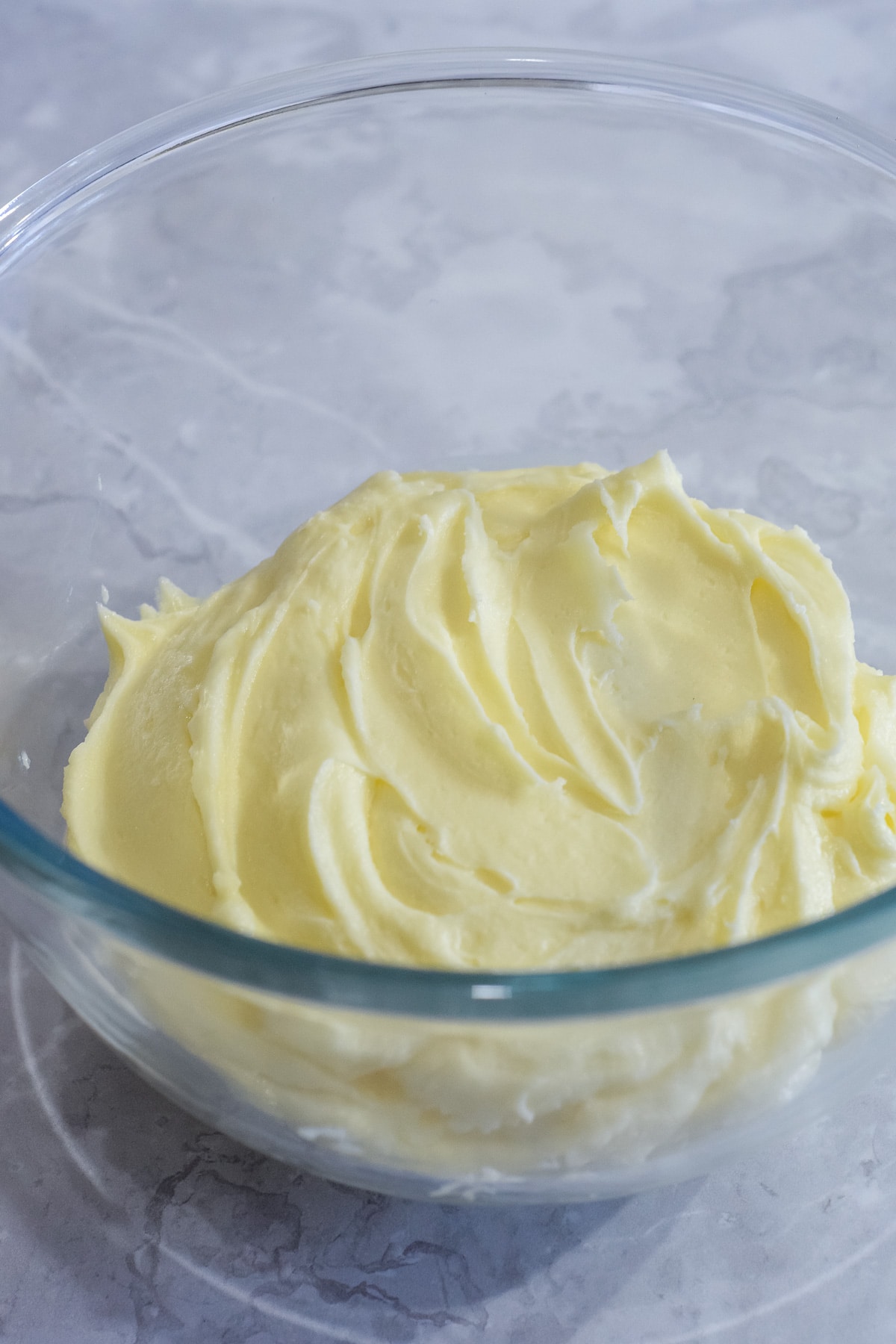
♻️ Alternatives and substitutions
Flavour options
This American buttercream frosting is great as a simple vanilla flavor. But you can also add different ingredients to change the flavor.
If you add 1 ½ tablespoon of cocoa powder, you’ll get a delicious chocolate buttercream, like the one I use for these gluten-free chocolate cupcakes.
You can also swap the vanilla extract for lemon extract, orange extract or almond extract for example. Or for a more natural flavouring, you can add a few teaspoons of lemon juice or other fruit juices instead of using a flavor extract.
Other flavour options also include adding peanut butter, jams, curds, spreads and even melted chocolate. For example, I use this buttercream recipe as a base for the oreo buttercream found in my oreo cake and the biscoff buttercream found in my biscoff cake.
Vegetable shortening
To change the consistency of your buttercream, you can swap up to half of the butter for solid vegetable shortening instead. This will increase the stability of your buttercream, which can be important if you live somewhere quite hot.
Vegan buttercream
To make vegan buttercream frosting, you can swap the butter for a firm dairy-free butter (baking block) alternative. You must use the solid kind rather than a liquid or soft variety.
You can also swap the milk for a dairy-free alternative, such as soy milk, almond milk or coconut milk.
If you’re baking for vegans, be sure to then use your vegan frosting on a vegan cupcake, cake or cookie!
🍪 Other goodies
So, I definitely recommend that you whip up a batch of this easy vanilla American buttercream frosting! But as an avid home baker, I’m sure you’re asking yourself “what next?”.
If you’re looking for some sweet treats to use this classic frosting on, check out my recipe for matcha cupcakes or these chocolate orange cupcakes or why not frost these triple chocolate brownies or melting moment sandwich cookies with sweet vanilla goodness?
If you love all things vanilla heaven, why not take a look at my easy recipes for Victoria sponge cake or these funfetti cupcakes.
For other frosting and buttercream recipes, check out my favourite matcha buttercream or how about a white chocolate no-cream ganache.
Looking forward to some new recipes? Check out my Facebook, Instagram and Pinterest pages for a few sneak peeks and some sweet inspiration!
Or if you’d like to hear about our latest recipes, why not subscribe to our newsletter?
You may also like:
📋 Recipe
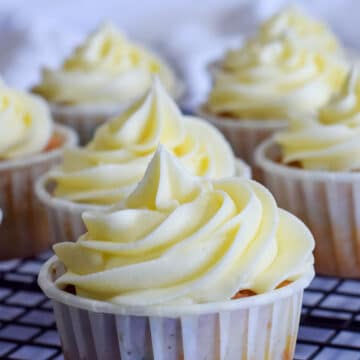
Vanilla American Buttercream
Rate this recipe here:
Ingredients
- 125 g (½ cups) unsalted butter (room temp.)
- 280 g (2 ⅓ cups) icing sugar (powdered sugar)
- 2-3 tablespoon heavy cream (or whole / semi-skimmed milk)
- 1 ½ teaspoon vanilla extract
Instructions
- Beat the butter (either by hand, using an electric mixer or stand mixer) until pale, light and fluffy. This could take several minutes.
- Sieve half of the icing sugar into the butter and beat until combined, then repeat this with the remaining half of icing sugar.
- Add in the cream and vanilla extract, mixing until only just smooth. If the texture is too thick, add more cream to loosen. Use to frost your cupcakes, cakes, brownies, etc. and enjoy!
Notes
- This recipe makes enough to frost 10 cupcakes (regular size).
- To frost a 3-layer 6inch cake, between the layers and on top and sides, you'll need to double this recipe (scale up by x2).
- To frost a 3-layer 8inch cake, between the layers and on top and sides, you'll need to triple this recipe (scale up by x3).
Nutrition
Nutritional information is an estimate based on an online nutritional calculator, actual values may vary.
Sharing is caring:

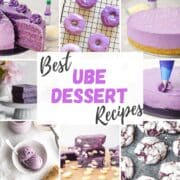
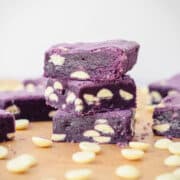
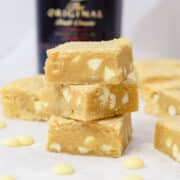
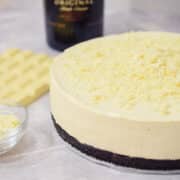
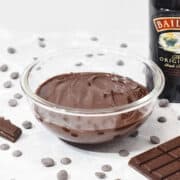
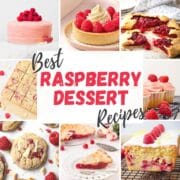
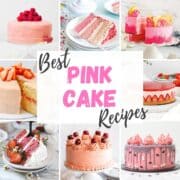
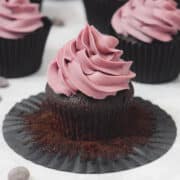

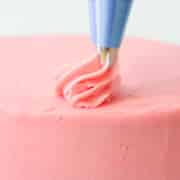
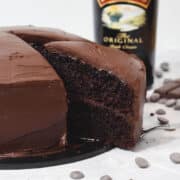
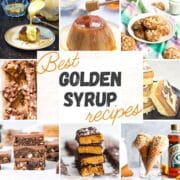
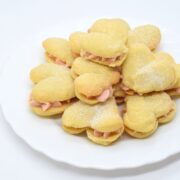
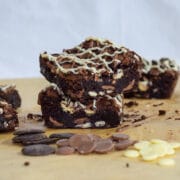
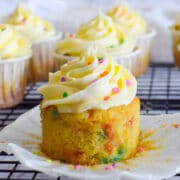
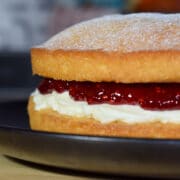
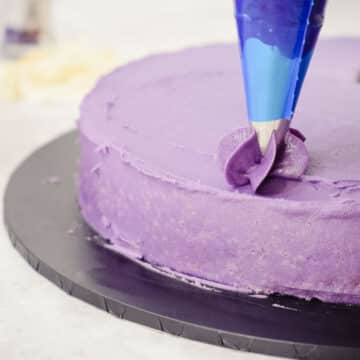
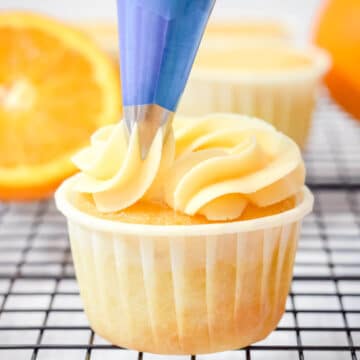
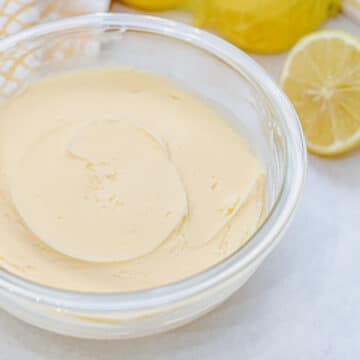
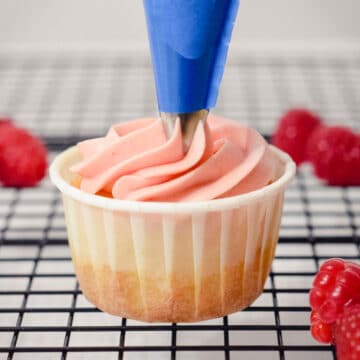
Comments
No Comments